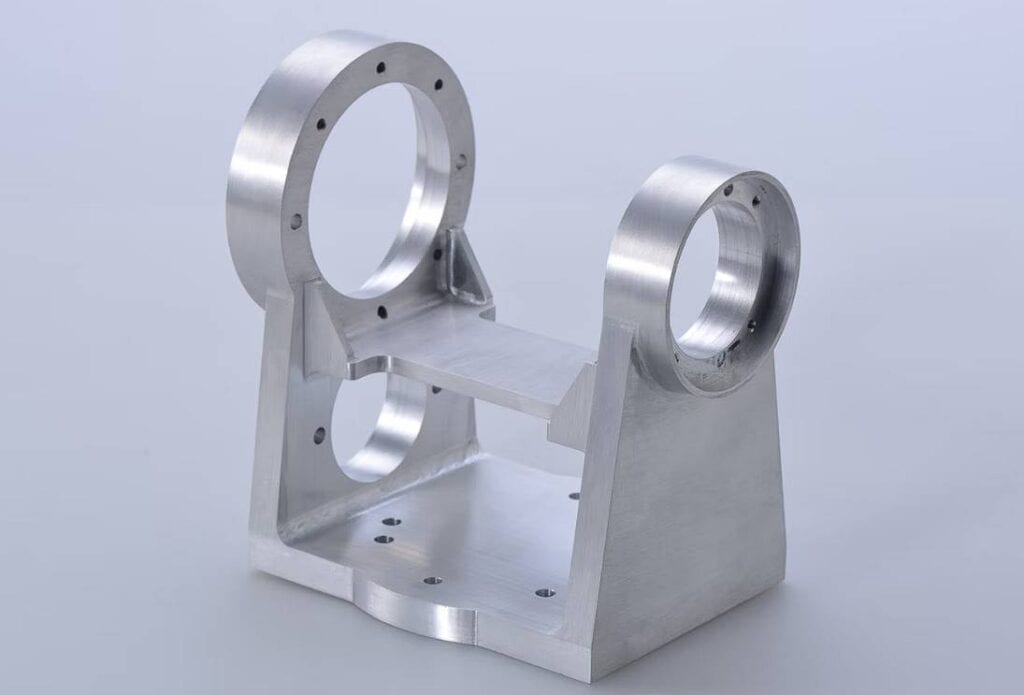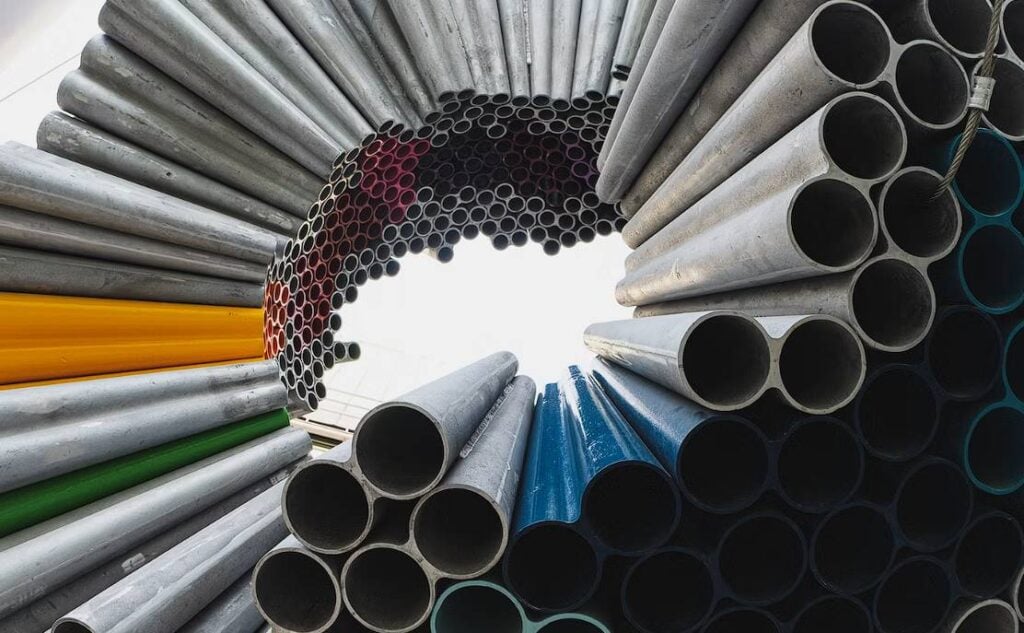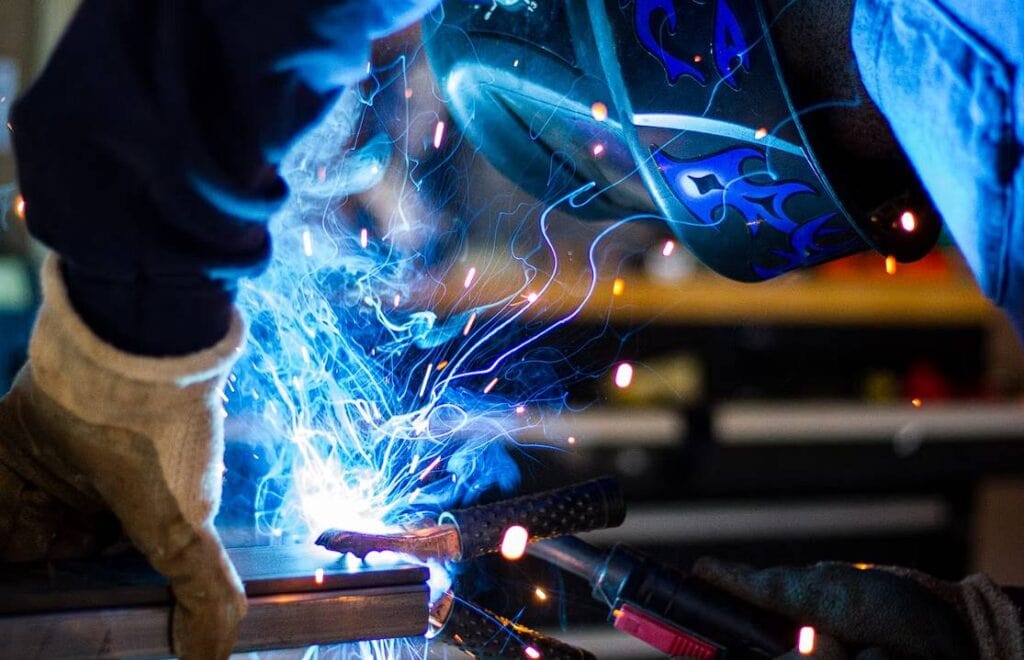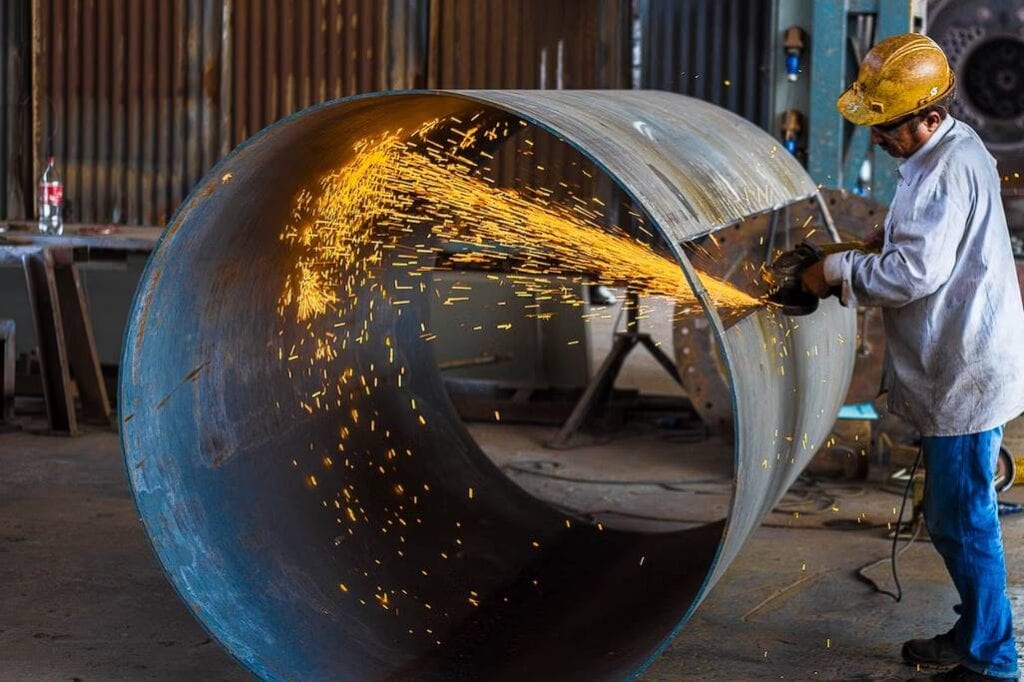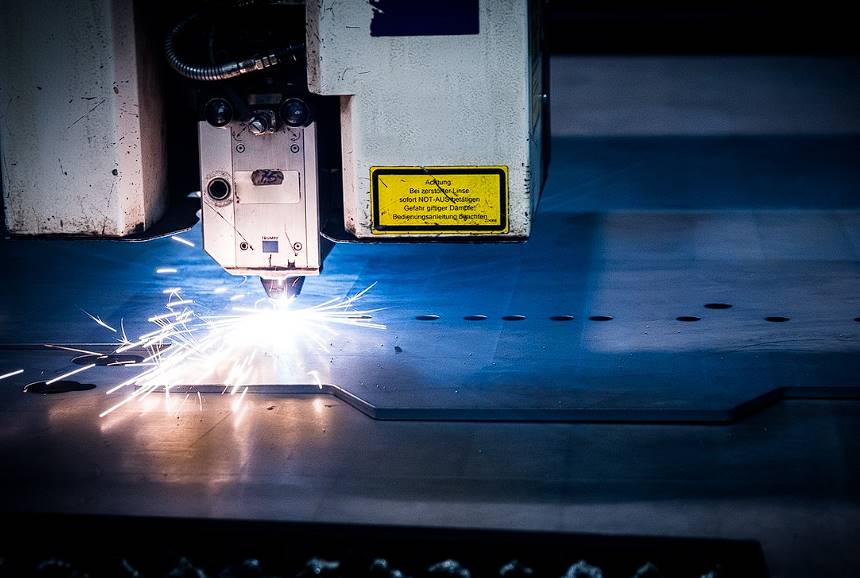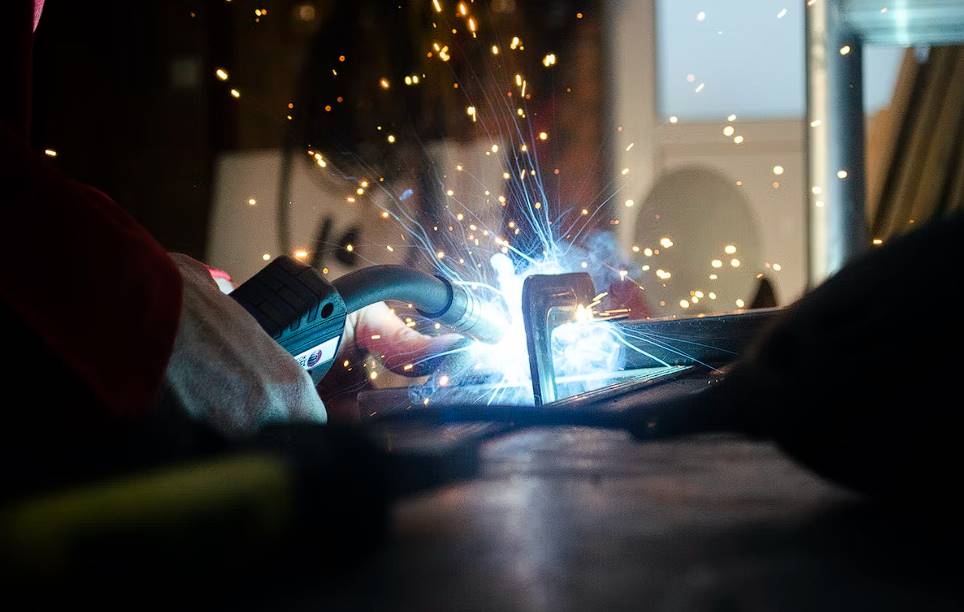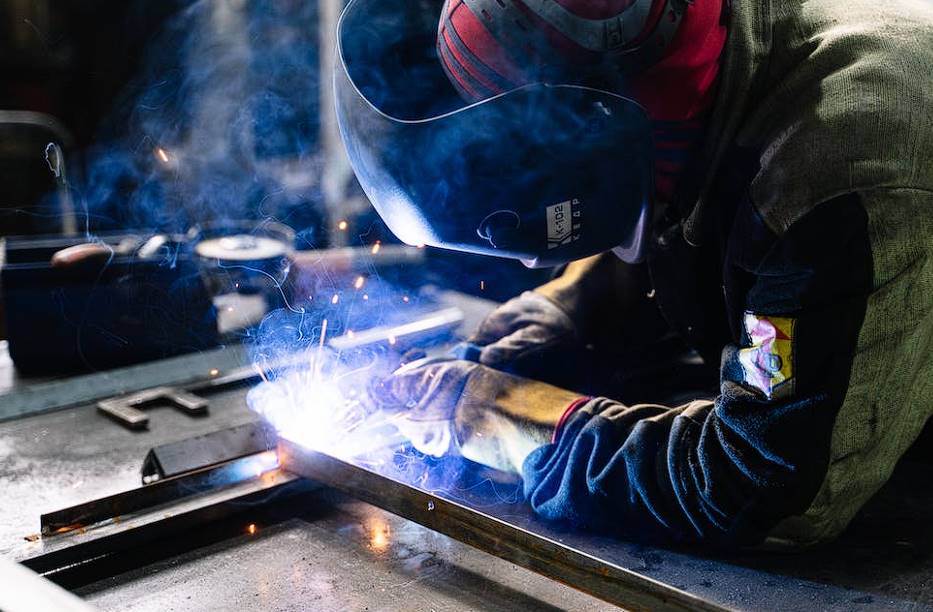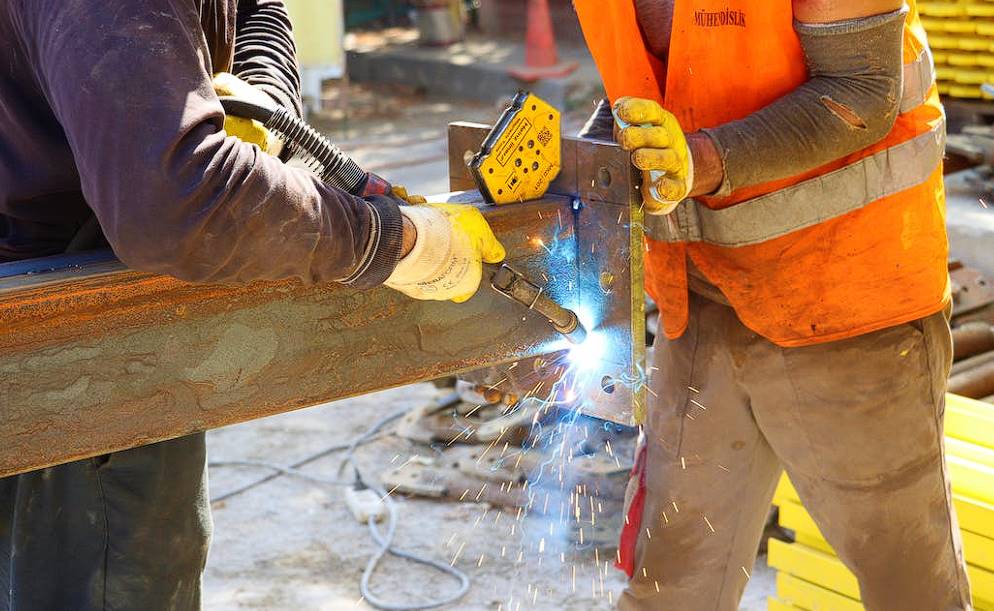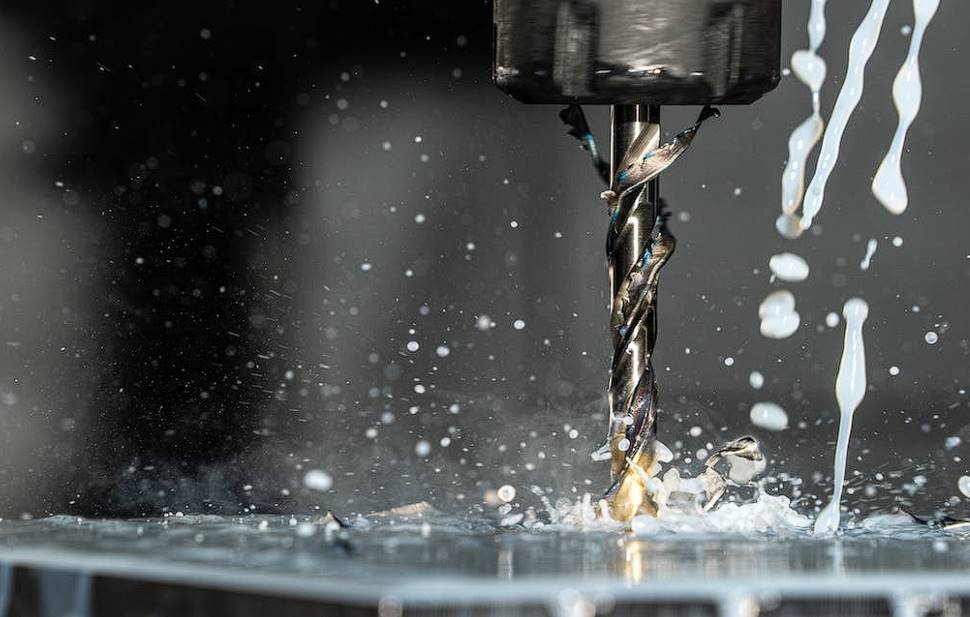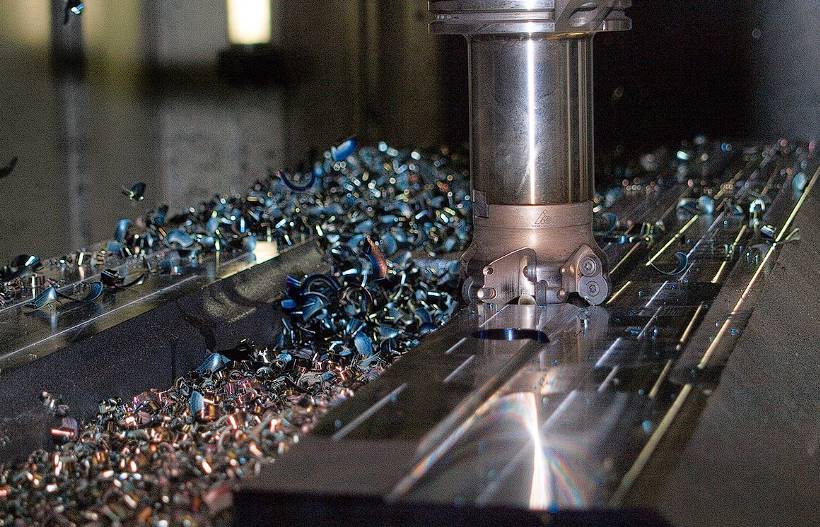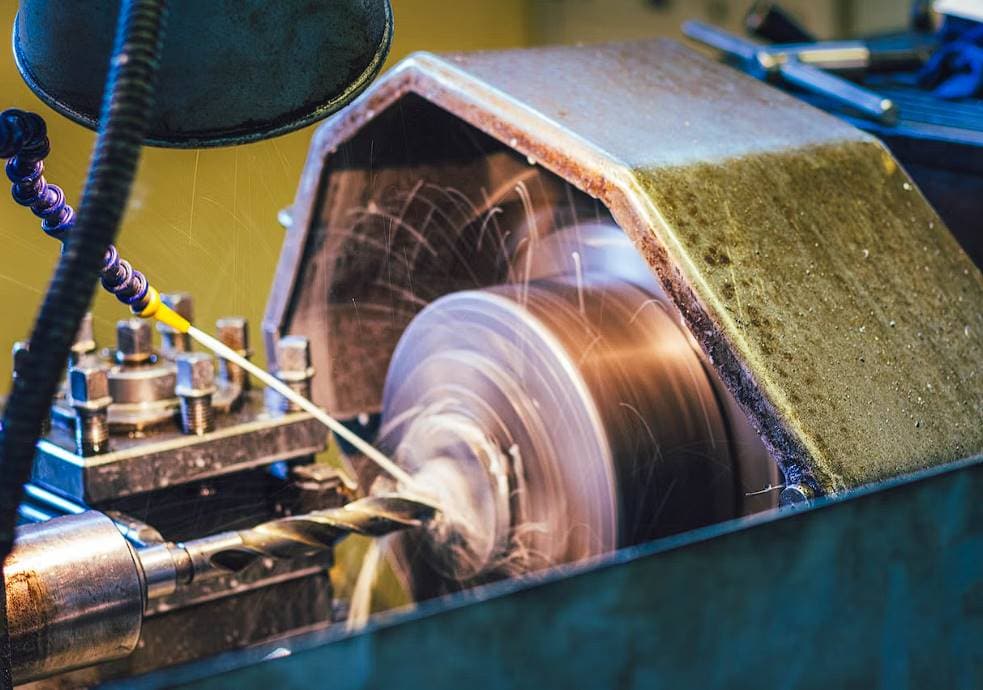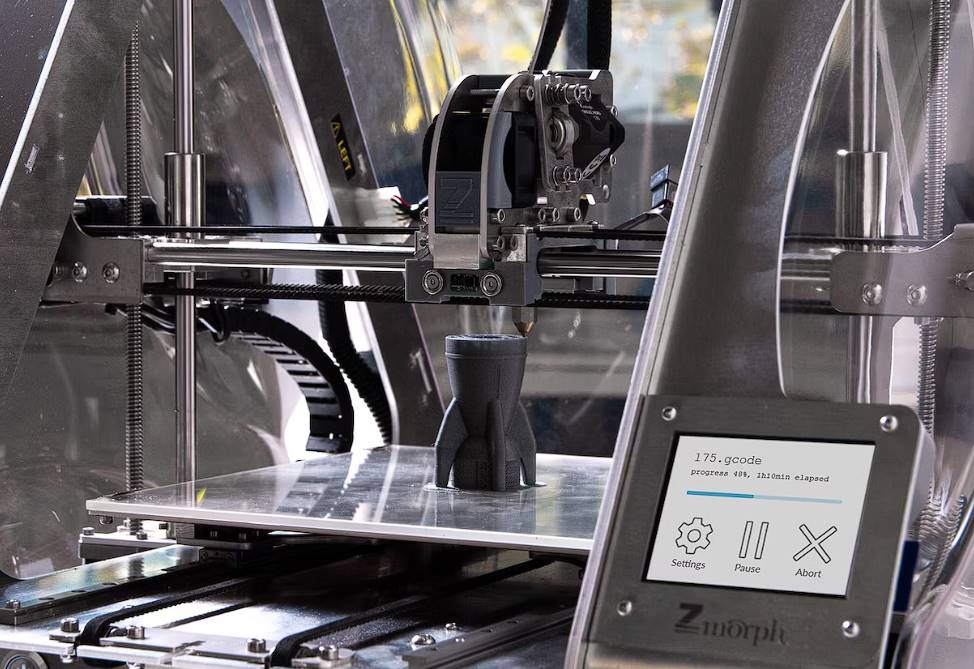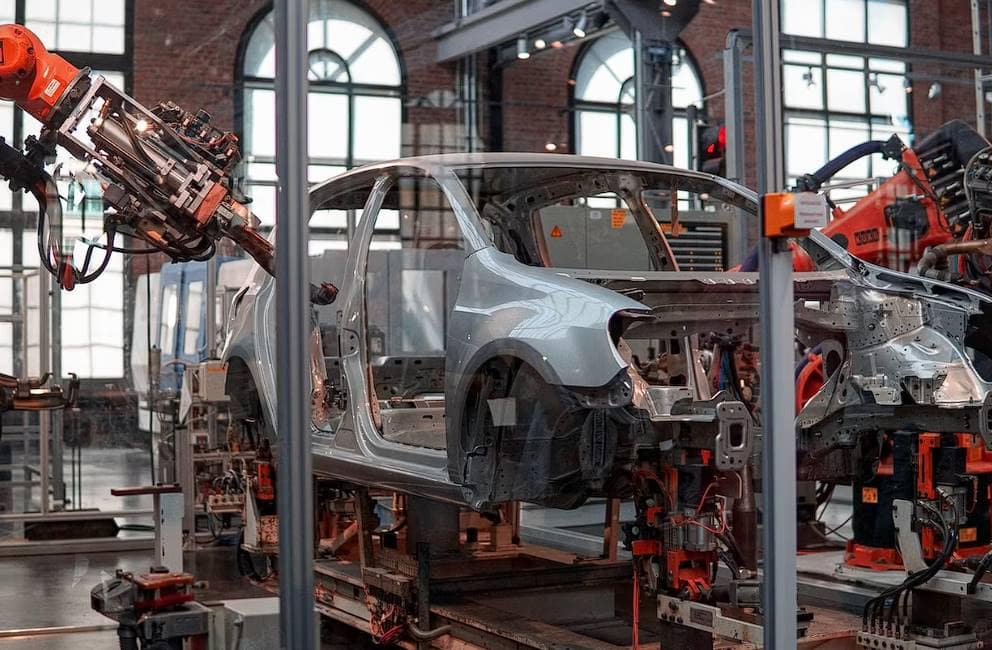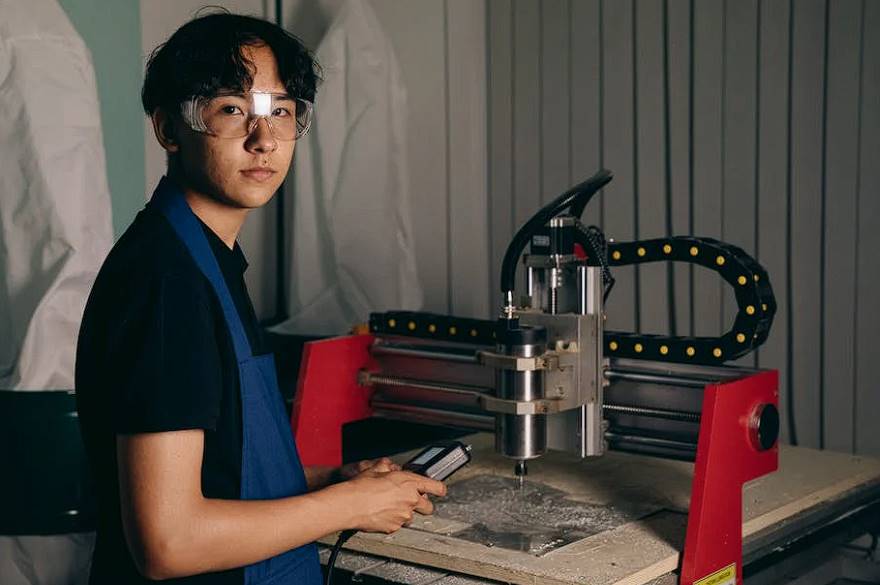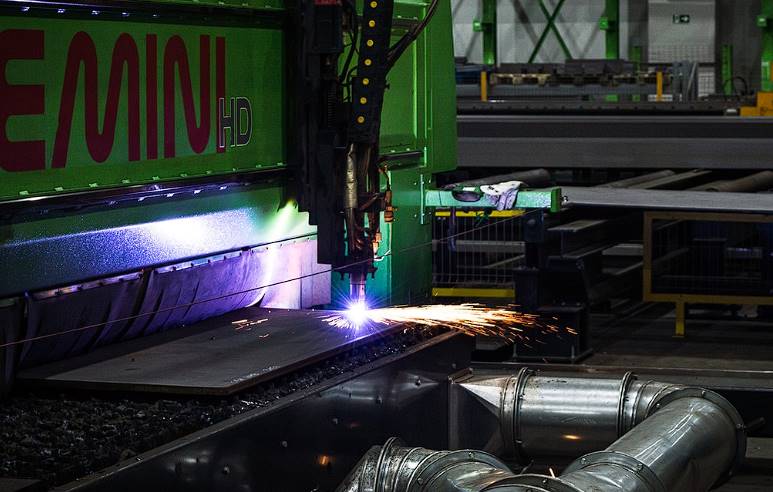CNC machines, which are complex but extremely accurate and exact, have revolutionised the manufacturing industry and now form the backbone of modern production.
Knowing their inner workings is essential if you wish to delve into the fascinating realm of these technological marvels. For example, a CNC machine is a symphony of accuracy and automation, from its powerful spindles to complicated control systems.
Come explore with us the mechanisms and vital parts that give life to these remarkable machines. Learn how to use CNC machines, and you'll open the door to the future of advanced production.
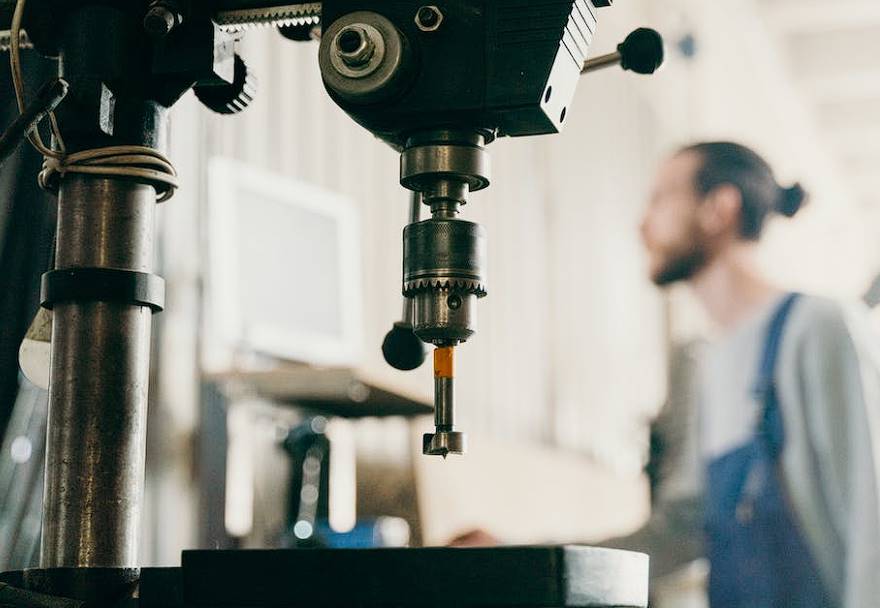
The CNC Machine: What Is It?
A stock grinding is processed with computerised controls to achieve a product with precise geometrical and dimensional tolerances in a process known as computer numerical control (CNC) machining.
Aerospace CNC machining, which has tighter tolerances than other industries, benefits from the technique, as do large-scale CNC machining and prototype for parts manufacturing and the telecommunications industries.
It's important to distinguish between the "CNC machining" technique and the actual machine itself, which goes by "CNC machine." CNC (Computer Numerical Control) machines are programmed machines that can carry out CNC machining tasks without human intervention.
The stock material is deformed and displaced to get the desired shape in the early operations. In contrast, in the additive processes, layers of materials are assembled to obtain the desired form.
CNC machinings, being fully automated, can manufacture even the most fundamental of parts with a high degree of precision and accuracy at a reasonable cost, even in low to moderate volume production runs. CNC machining has a number of advantages over its rivals, but it still can't make very complex items at a reasonable price or with a particularly complicated design.
CNC machining refers to the CNC machine's ability to cut. The CNC machining process begins with designing or preparing a programme that is then input into a CNC machine. Then, as defined by the code, CNC regulates the velocities and rates at which machine tools operate.
How Does a Computer Numerical Controlled Machine Function?
The CNC's MCU is programmed with the part programme first. Then, the MCU processes all incoming data and generates and transmits all motion orders to the driving system using the programmed instructions.
When motion commands are delivered from the MCU, the drive system begins to operate. The driving system manages the machine's motion and speed.
A signal is transmitted from the feedback system to the MCU, detailing the machine tool's location and velocity measurements. The MCU compares the feedback signals to the reference signals, and if there are discrepancies, it sends updated signals to the machine tool to cause the correct action to be taken.
All the orders, programmes and other crucial information can be shown on a display device. It's like the machine's monitor for your data.
Use of Computer Numerical Control Machines
In this context, CNC machines can be used in the following ways:
- Today, computer numerical control equipment is ubiquitous in the manufacturing sector. CNC's prevalence in the manufacturing sector has grown with consumer demand. CNC machine tools include turning, milling, shaping, welding, and more.
- CNC machines are used in virtually all sectors of the manufacturing sector. Demand for the use of CNC has skyrocketed in recent years due to the increasingly competitive market and rising expectations. CNC includes various machine tools, such as lathes, mills, shapers, welders, etc.
- Automotive, metal removal, metal forming, electrical discharge machining, woodworking, and many more industries rely on computer numerical control machinery.
Advantages of CNC Machine
- It can produce jobs more accurately and precisely than any other manual machine.
- It can be run for 24 hours a day.
- The parts produced by it have the same accuracy. The parts manufactured are the same.
It can be used by anyone; expertise in the field is not necessary. Accuracy and precision can also be achieved by a less-skilled operator.
Operators have a lot of leeway for making adjustments and enhancements that will speed things up.
- It can produce complex designs with high accuracy in the minimum possible time.
- The designer can now operate as a virtual factory using today's CAD tools. This eliminates the effort and expense of creating a physical model or prototype.
- Since fewer people are needed to operate a CNC, labour expenses can be reduced.
Disadvantages of CNC Machine
There are some drawbacks despite all the benefits:
- These devices are extremely pricey in comparison to their manual counterparts.
- Accessories for CNC machines tend to be quite pricey, too.
- CNC machines have greater upkeep costs.
- The machine can only be used with high-priced accessories.
The Components Used In A CNC Machine
Mechanical parts production from metal, plastic, and wood is now possible using computer numerical control machinery.
A wide variety of CNC machines are available, but CNC mills and lathes are the most prevalent. Cylindrical parts work best on CNC lathes, while mills might be flat, curved, or angular.
Input Device
A CNC machine's "input device" is its mechanism of receiving CNC programmes. This input device may include the keyboard (for direct G-code input), a flash drive with a USB port (to carry a finished programme from another machine), or a wireless connection (if the programme is to be retrieved from another machine over the local network).
The MCU, or Machine Control Unit,
The MCU is the collection of electronics and programming that takes G-code from an input source and converts it into commands that the tool drivers can carry out to produce the desired machining results.
It's a crucial part of any CNC machine. First, the MCU reads Coordinates from G-code, which then commands servo motors to move the machine along its axes.
It also processes data from output sensors to double-check that the tool ended up where it was supposed to be. The MCU also activates coolant and tool changers based on G-code instructions.
Machine Tools
Any instrument that can perform a procedure on a workpiece, typically a cutting tool, falls under the term "machine tool." Various CNC machines have a wide variety of machine tool configurations. For example, cutting is done with a fixed tool in a CNC lathe by feeding the raw material being turned into the tool.
CNC mills spindle-move into the material at a constant speed. More complicated 5-axis machines, on the other hand, allow for tool and workpiece motion, creating more intricate details in the final product.
Machines are stored in "tool libraries," essentially racks for storing machines that might be needed to make a certain part. In automatic tool changing, one tool is removed from the spindle, stored in a library, and the next tool is installed.
Driving or Transport System
The driving system consists of the motors responsible for moving the tool along the machine's axes. With a typical CNC mill, horizontal motion occurs along the x and y axes, while vertical motion occurs in the z-axis, where the cutting tool resides.
The driving system of a typical CNC lathe rotates the cutting tool in a straight line relative to the workpiece's axis of rotation. Instead of moving the cutting tool perpendicular to the workpiece's rotational axis, as is done when cutting in a non-circular fashion, the tool is rotated along the workpiece's rotating axis.
Linear guides, ball screws, and servo motors are common components of CNC machine motion control systems.
The ball screw nut, which controls the location of the machine's bed and spindle, can be accurately moved by servos. Precision and rigidity in bed and spindle motion are guaranteed by linear guides.
Feedback System
Despite the precision of the driving system, it may still be necessary to have a closed-loop control system so that after the machine moves a mechanical component to a specific position, it is verified and, if necessary, adjusted. The position can be measured using a linear or rotary encoder attached to the servo motor.
Special probing tools are also used to zero the machine and measure the actual part during machining to adjust machining parameters to meet dimensional requirements.
Feedback System
Even if the driving system is extremely precise, a closed-loop control framework may be required to verify and, if necessary, modify the location of a mechanical component after the machine has moved it. A linear or rotary encoder coupled to the servo motor can precisely determine its location.
Special probing tools are used to zero the machine and to measure the actual item as it is being machined so that machining parameters can be fine-tuned as needed to fulfil dimensional requirements.
Display Unit
The display unit is a monitor that shows the operator relevant data; some displays have enormous high-resolution screens that show a lot of data, while others have minimal low-resolution image screens that show just the bare minimum.
The display unit illustrates how the operator controls the CNC machine, from entering the G-code to adjusting the settings. The current machine status is also displayed on the screen.
Bed
The raw material is placed on the bed of a CNC milling machine. The component to be worked on is held in place using one of several types of work-holding jigs.
Jigs are often fastened to the bed through t-slots or holes. The x and y axes of today's CNC machines can rotate, and the x and y axes utilised by conventional CNC machine beds can be moved horizontally.
Headstock
The lathe's headstock houses the motor, bearings, and gears that spin the chuck fast enough to perform the necessary machining operations.
On a computer numerically controlled lathe, the headstock is on the left. In most cases, you'll need to remove several panels to get to the headstock for a check.
Tailstock
The tailstock of a computer numerically controlled lathe provides axial support for long, cylindrical workpieces, complementing the axial support and rotation provided by the chuck. Without a tail stock, forces generated while cutting would deflect the material away from the cutter.
The quill in the tailstock can freely rotate, with the raw material centred on it. It excels in cutting power screws, shafts, and other similar components. The lathe's tailstock can only be adjusted along the z-axis to accommodate varying raw material lengths.
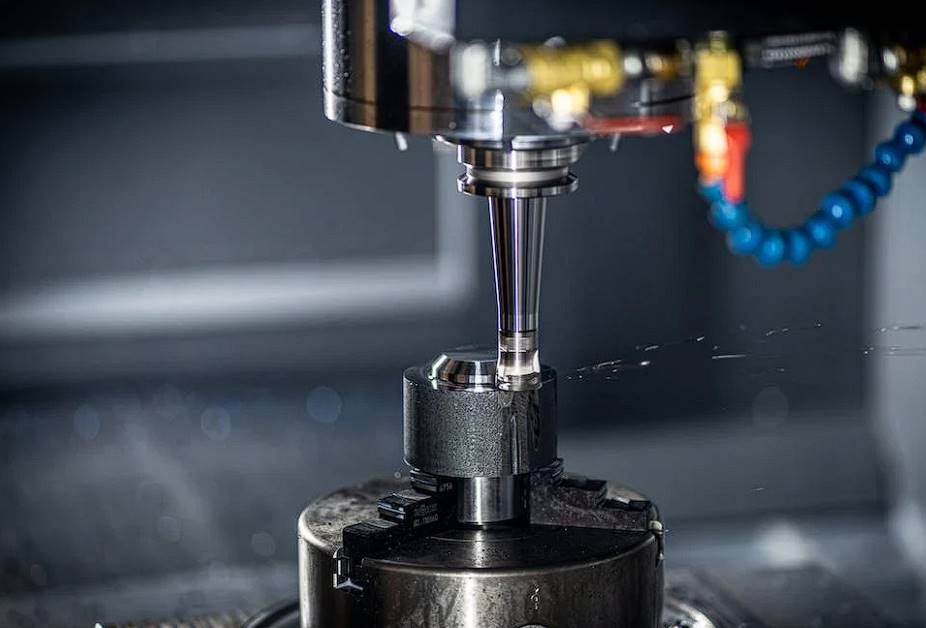
Quill for Tailstock
The tailstock is where you'll find the quill and its conical tip should line up with the axes of the spindle and chuck. It is common practice to drill a blind hole through the end of the workpiece into the centre when machining a long shaft so that the quill has somewhere to rest.
The versatility of the quill is restricted. First, the tailstock is brought into proximity to the part to clamp the raw material in place, and then the quill is operated using pneumatic or hydraulic pressure.
Pedal or Footswitch
Foot pedals operate the tailstock quill and chuck of a CNC lathe. Operators can use foot pedals to help put blanks into the machine and remove finished products from the machine.
Since the workpieces of a CNC mill are held in place by the bed, the operators don't need to have their feet on pedals to feed in and remove raw materials.
Chuck
The chuck holds the raw material securely in place, a lathe-specific component. Then, the spindle quickly spins it around.
Typically, a chuck will have three or four grips activated by pneumatics or hydraulics. Chuck grips with three jaws are self-centring. The grips all rotate in a circular motion at the same time.
Four-jaw chucks with independently adjustable, non-self-centring grips. As a result, the accuracy of a four-jaw chuck is superior to that of a three-jaw chuck. In addition, since their placement can be fine-tuned to accommodate variations in the raw material, they make it possible to do eccentric cutting.
Command Centre
The operator can interact with the CNC machine via the control panel, which houses the keyboard, display unit, input device, and various control buttons. In addition, the screen can be moved to a more comfortable viewing angle by attaching the control panel to an extensible arm mounted to the CNC machine.
Conclusion
CNC machines are complex but extremely accurate and exact machines that revolutionise the manufacturing industry. They are programmed machines that can carry out CNC machining tasks without human intervention. The process begins with designing or preparing a programme and then regulates the velocities and rates at which machine tools operate. The MCU is programmed with the part programme and processes all incoming data and generates and transmits motion orders to the driving system. The driving system manages the machine's motion and speed.
CNC machines are used in virtually all sectors of the manufacturing sector due to consumer demand. They can produce jobs more accurately and precisely than any other manual machine, can be run for 24 hours a day, and can produce complex designs with high accuracy in the minimum possible time. However, they are expensive and have greater upkeep costs. The components used in CNC machines include CNC mills and lathes, which can produce mechanical parts from metal, plastic, and wood. The input device of a CNC machine is the keyboard, flash drive, USB port, or wireless connection.
The Machine Control Unit (MCU) is the collection of electronics and programming that takes G-code from an input source and converts it into commands for the tool drivers to carry out. Machine Tools are instruments that can perform a procedure on a workpiece, typically a cutting tool. The driving system consists of the motors responsible for moving the tool along the machine's axes. Linear guides, ball screws, and servo motors are common components of CNC machine motion control systems. The ball screw nut of a CNC milling machine is accurately moved by servos and linear guides.
A closed-loop control system may be necessary to verify and adjust the location of a mechanical component after the machine has moved it. The display unit is a monitor that shows the operator relevant data and the current machine status. The raw material is placed on the bed and held in place using work-holding jigs. The headstock houses the motor, bearings, and gears that spin the chuck fast enough to perform the necessary machining operations. The tailstock provides axial support for long, cylindrical workpieces.
The tailstock of a CNC lathe is where the quill is located and can be adjusted along the z-axis to accommodate varying raw material lengths. It is common practice to drill a blind hole through the end of the workpiece into the centre when machining a long shaft so that the quill has somewhere to rest. Foot pedals operate the tailstock quill and chuck of a CNC lathe, while the chuck holds the raw material securely in place and the spindle quickly spins it around. The operator can interact with the CNC machine via the control panel, which houses the keyboard, display unit, input device, and various control buttons.
Content Summary
- CNC machines have revolutionised the manufacturing industry.
- CNC machines are complex but highly accurate and exact.
- CNC machines are the backbone of modern production.
- CNC machines are a symphony of accuracy and automation.
- CNC machines have powerful spindles and complicated control systems.
- CNC machines allow for precise geometrical and dimensional tolerances.
- CNC machining is a computer-controlled process.
- CNC machines can manufacture even the most fundamental parts with precision.
- CNC machining has advantages over manual machines.
- CNC machines are programmed to carry out machining tasks.
- CNC machines use the MCU (Machine Control Unit) to process data and generate motion orders.
- Drive systems in CNC machines manage motion and speed.
- Feedback systems in CNC machines verify machine tool location and velocity.
- CNC machines can be used in various industries like aerospace, automotive, metal removal, etc.
- CNC machines produce jobs accurately and precisely.
- CNC machines can run continuously for 24 hours.
- CNC machines can be used by anyone without expertise.
- CNC machines offer flexibility for adjustments and enhancements.
- CNC machines can produce complex designs with high accuracy.
- CAD tools allow designers to operate as virtual factories.
- CNC machines require fewer operators, reducing labour expenses.
- CNC machines are more expensive than manual machines.
- Accessories for CNC machines can be pricey.
- CNC machines require higher upkeep costs.
- CNC machines have specialised driving and transport systems.
- Linear guides, ball screws, and servo motors are common components of CNC machine motion control systems.
- CNC machines use a feedback system for precise positioning.
- Probing tools are used to measure parts during machining.
- CNC machines have a display unit to show relevant data and machine status.
- CNC machines have components like the bed, headstock, tailstock, chuck, and command centre.
Frequently Asked Questions
The worktable is the surface where the workpiece is placed and secured during machining. It provides a stable platform for the workpiece and allows for precise movement and positioning in relation to the cutting tools.
The coolant system is responsible for cooling and lubricating the cutting tools during machining operations. It helps to prevent overheating, reduce friction, and improve the overall quality of the machining process.
Various types of control systems are used in CNC machines, including open-loop control systems and closed-loop control systems. Closed-loop control systems use feedback mechanisms to ensure accurate positioning and compensate for errors.
CNC machines often have safety features such as emergency stop buttons, safety interlocks, and protective enclosures to ensure operator safety. These features help prevent accidents and protect the operator from potential hazards.
Yes, components of a CNC machine can be upgraded or replaced to enhance its capabilities or replace worn-out parts. This allows for flexibility and adaptability to changing machining requirements.


